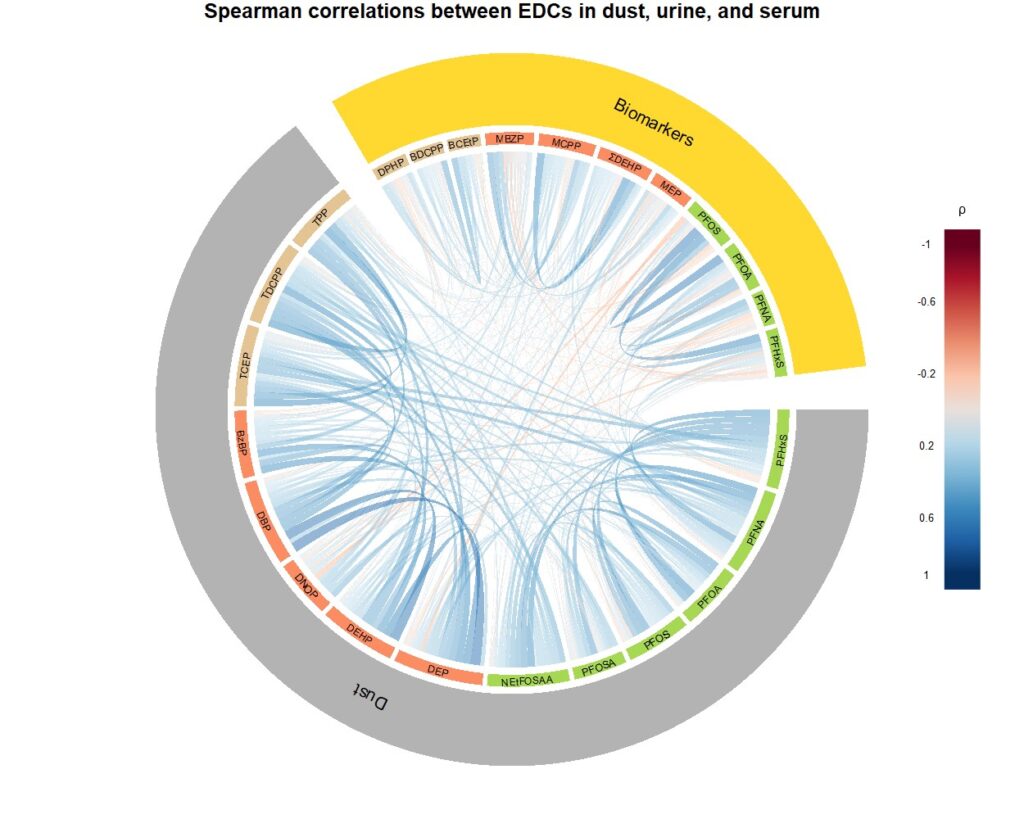Perinatal & Pediatric
A randomized controlled trial to reduce endocrine disrupting chemical exposure in children Alan Fossa* Alan Fossa Katherine Manz George Papandonatos Aimin Chen Mark J. LaGuardia Robert C. Hale Bruce Lanphear Alexandra Pagano Kurt Pennell Kim Yolton Joseph Braun
Endocrine disrupting chemical (EDC) exposures during childhood may lead to adverse health outcomes, but few studies have explored the efficacy of dust control on EDC exposure. We conducted a secondary analysis of a randomized controlled trial, originally designed to reduce lead exposure, to see if the intervention lowered EDC loadings in household dust and biomarker concentrations in 2- and 3-year-olds. We also explored whether effects on biomarker concentrations were mediated through dust loadings. Study participants were maternal-child pairs from the Cincinnati, Ohio metropolitan area enrolled between 2003 and 2006 (n=250). Prenatally, families received either a housing intervention that included paint stabilization and dust mitigation or, as a control, injury prevention measures. At 24- or 36-months we measured organophosphate esters (OPEs), perfluoroalkyl substances (PFAS), and phthalates or their metabolites in dust, urine, and serum. We assessed associations between dust and corresponding biomarker EDCs, characterized EDC mixtures, and investigated treatment effects using Spearman correlations, principal components analysis, and linear regression, respectively. To adjust for selection bias due to attrition, we fit all statistical models using inverse probability of retention weights. Correlations between EDCs in dust and analogous biomarkers were weak (ρ≤0.3). The intervention was most notably associated with lower PFAS in dust (as high as -41%; 95% CI: -71, 19 for PFOA) and lower urinary concentrations of OPE and phthalate metabolites (as high as -22%; 95% CI: -38, -3 for DEHP metabolites). Almost all 95% confidence intervals included the null. There was some evidence that lower PFAS in serum was mediated through dust loadings (proportion mediated as high as 86% for PFOA). Housing interventions that mitigate dust could be effective in reducing childhood exposure to EDCs but larger studies with more tailored interventions are needed.

